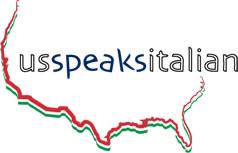Imparare l'italiano
Italian in the U.S.
In the last ten years, the demand for the Italian language in the United States has grown continually.
Such interest is certainly nourished by the presence of the vast American community of Italian origin, which has continued to rediscover its linguistic and cultural origins. This is demonstrated by the fact that the number of Americans who have declared their true Italian ancestry has increased, according to the figures of the US Census Bureau from 15.5 million in 2000 to 17.8 million in 2009.
That is not enough, however, to explain the attraction that our language exercises in the United States. Aside from one’s heritage, many other sectors of the American population, in fact, embrace the study of the Italian language since it is a language of culture, art, and style. This does not include counting the stimulus provided by the excellent and growing economic and political relations between Italy and the United States, that make the two countries global partners, under the profile of investments and commercial exchanges.
The growth of Italian in the United States is confirmed by its numbers.
According to the Modern Language Association (MLA) the number of the students of Italian in American universities has grown almost 60% between 1998 and 2009, increasing from 49,000 to 80,752. Italian maintains the fourth position after Spanish, French, and German, between the languages most studied at the University level.
Between 2004 and 2008, according to the American Council on the Teaching of Foreign Languages (ACTFL), the number of students of Italian in high schools increased from 65,000 to 78,000.
One recent study of the Department of Education revels that while offering other foreign languages in the primary and secondary schools diminishes, that of Italian increases: in 2008 Italian was studied in 4% of schools with respect to 3% in 1997.
Italy is, according to the Institute of International Education, the second destination most sought out by American students for trips/study abroad. In the 2008-2009 academic year, Italy hosted 27,362 American students, placing second only after Great Britain.
Numerous active Italian-American organizations in the United States are aware of the importance of studying Italian. The Conference of the Presidents of the Major Italian-American Organizations made it a priority in their program. The creation of a system, coordinated by the Italian Authorities present in the United States, in collaboration with the abovementioned Conference as well as significant active, private Italian groups within the USA market, contributed to a most important goal in November 2010—the reestablishment of the Advanced Placement Program in Italian beginning with the 2011-2012 school year.
Following the reestablishment of the Italian AP Italian Exam, some of the major partners in achieving these importance results decided to continue the coordination of a system for the promotion and diffusion of the Italian language through the creation of the Osservatorio of the Italian Language in the United States.







